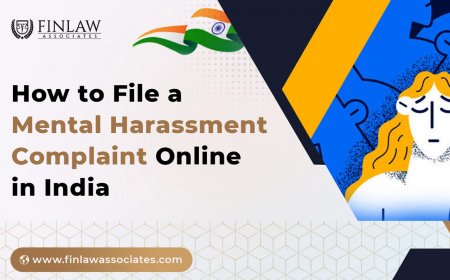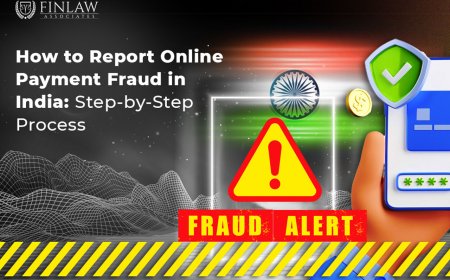Social Media Harassment: What It Is, Laws in India, and How to Deal With It
Learn about social media harassment in India - its forms, legal protections, and effective ways to report and deal with online abuse safely.

In the digital era, social media platforms have revolutionized the way people connect, communicate, and share information. However, alongside their benefits, these platforms have also become a breeding ground for social media harassment, a growing concern worldwide and notably in India.
Social media harassment can affect anyone — students, professionals, celebrities, or even ordinary citizens — and its repercussions can be deeply damaging. This article explores what social media harassment is, the legal protections available in India, and practical strategies to effectively handle and prevent it.
What is Social Media Harassment?
Social media harassment refers to the use of digital platforms to threaten, embarrass, intimidate, or humiliate someone repeatedly. Unlike a one-time offensive comment, harassment involves persistent behavior intended to cause distress.
Common forms include:
-
Harassing Messages: Threatening or abusive direct messages or comments.
-
Cyberstalking: Persistent tracking and following someone’s online activity.
-
Trolling: Posting inflammatory, irrelevant, or offensive comments to provoke.
-
Doxxing: Publicly sharing personal or sensitive information without consent.
-
Revenge Porn: Sharing intimate images/videos without permission.
-
Fake Accounts: Impersonating someone to spread misinformation or abuse.
Social media harassment is often hidden behind anonymity, which emboldens perpetrators and intensifies the victim’s helplessness.
How Common is Social Media Harassment in India?
India has witnessed a significant rise in cyber harassment cases over the last decade, correlating with exponential growth in internet penetration and smartphone usage. According to the National Crime Records Bureau (NCRB) 2022 report, cybercrime incidents increased by over 50% in the last five years, with social media harassment constituting a large chunk of these cases.
Women and young adults are disproportionately targeted, with a 2021 survey by the Internet and Mobile Association of India (IAMAI) reporting that nearly 40% of Indian women have experienced online harassment at some point.
Legal Framework Addressing Social Media Harassment in India
India’s legal landscape has evolved to address the challenges posed by online harassment. Below are the critical laws that victims and law enforcement rely on.
The Information Technology Act, 2000
The IT Act is central to tackling cyber offenses, with specific sections aimed at social media harassment:
-
Section 66E: Penalizes capturing and publishing private images without consent — critical in cases of revenge porn.
-
Section 67: Prohibits publishing obscene material electronically.
-
Section 67A & 67B: Target sexually explicit content and child pornography.
-
Section 72A: Addresses the breach of confidentiality and privacy.
Indian Penal Code (IPC)
The IPC complements the IT Act with several pertinent sections:
-
Section 354A: Covers sexual harassment, including online sexual harassment.
-
Section 499 and 500: Laws against defamation.
-
Section 506 and 507: Criminal intimidation, including anonymous threats.
-
Section 509: Acts intended to insult a woman’s modesty.
The Protection of Children from Sexual Offences Act (POCSO), 2012
This act specifically protects minors from sexual abuse and exploitation, including online harassment.
IT Intermediary Guidelines, 2021
Under these rules, social media platforms must have grievance redressal mechanisms and respond swiftly to complaints about abusive content, making it easier for victims to report harassment.
How to Identify Social Media Harassment: Red Flags to Watch For
Recognizing harassment early is essential to stopping it from escalating. Signs of social media harassment include:
-
Receiving frequent abusive or threatening comments/messages.
-
Repeated tagging in offensive posts or memes.
-
Unsolicited explicit images or messages.
-
Being impersonated by fake accounts.
-
Threats of physical violence or doxxing.
-
Persistent negative trolling targeting personal characteristics like gender, religion, or caste.
If you notice these patterns, it’s time to take action.
Practical Steps to Deal with Social Media Harassment
1. Document Every Incident
Maintain detailed records of the harassment. Take screenshots of messages, posts, profiles, timestamps, and URLs. This evidence is critical for any legal or police complaint.
2. Use Platform Reporting and Blocking Tools
Most platforms like Facebook, Instagram, Twitter, and WhatsApp allow you to report abusive content and block users. Regularly update your privacy settings to limit who can contact you.
3. Protect Your Online Presence
-
Set your social media profiles to private.
-
Avoid sharing personal details like your phone number, address, or daily routines publicly.
-
Use strong, unique passwords and enable two-factor authentication.
4. Seek Support
Talk to family, friends, or counselors. Emotional support is crucial, especially if harassment is causing stress or anxiety.
5. Report to Authorities
-
File an FIR at your local police station or use online cybercrime portals such as the National Cyber Crime Reporting Portal (https://cybercrime.gov.in/).
-
Share all documented evidence.
-
You can also approach cyber cells or specialized police units handling cybercrime.
6. Legal Recourse
-
Consult a lawyer experienced in cyber law.
-
You may pursue a civil suit for damages or criminal prosecution.
-
Courts in India have increasingly upheld strict penalties for online harassment to protect victims.
How Can Organizations and Platforms Help?
Social media companies have a responsibility to create safer environments. Measures that can help reduce harassment include:
-
Automated filters to detect abusive language.
-
Dedicated grievance redressal teams as mandated by Indian law.
-
Transparent reporting of content takedown requests.
-
Collaboration with law enforcement.
Victims should also urge platforms to enforce community guidelines strictly.
Recent Trends and Government Initiatives in India
India’s government has shown increased commitment to tackling online harassment:
-
Cybercrime Awareness Campaigns launched by the Ministry of Home Affairs.
-
Introduction of Digital Literacy Programs focusing on safe online behavior.
-
Strengthening cybercrime cells across states.
-
Mandatory compliance of social media companies with the Intermediary Guidelines, 2021 to quickly remove offensive content.
The Psychological Toll of Social Media Harassment
It is important to acknowledge the psychological effects that online harassment causes. Victims often experience:
-
Anxiety and depression.
-
Loss of self-esteem.
-
Social withdrawal.
-
In severe cases, suicidal ideation.
Seeking professional help, such as counseling or therapy, can be vital for recovery.
Preventive Tips to Safeguard Yourself from Social Media Harassment
-
Limit Personal Information Sharing: Oversharing can make you vulnerable.
-
Regularly Review Privacy Settings: Customize who can see your posts or contact you.
-
Educate Yourself on Reporting: Know how to use reporting tools on every platform.
-
Avoid Responding to Trolls: Responding may escalate harassment.
-
Create Strong Digital Boundaries: Avoid engaging in controversial or risky online behavior.
-
Join Support Groups: Online and offline groups can provide assistance and advice.
Conclusion
Social media harassment is a pressing issue in India that requires awareness, legal action, and strong personal security practices. The existing laws offer a solid framework for protection, but victim empowerment through knowledge and support is equally important.
If you are facing social media harassment, act promptly by documenting the abuse, reporting it on platforms, and seeking legal recourse. Remember, you are not alone, and help is available to ensure your online experience is safe and respectful.
FAQs on Social Media Harassment in India
Q1. What penalties can someone face for social media harassment in India?
Depending on the offense, penalties can include imprisonment of up to three years, fines, or both under IPC and IT Act provisions.
Q2. Can social media harassment affect one’s job or studies?
Yes, it can lead to psychological distress, affecting performance and attendance, and sometimes even result in reputation damage.
Q3. How do I report anonymous harassment?
You can file a complaint with police and request tracing of IP addresses. Sections 507 and 66F of IT Act may apply.
Q4. Is social media harassment considered a civil offense as well?
Yes, victims can also file civil suits for damages and injunctions against perpetrators.
What's Your Reaction?















